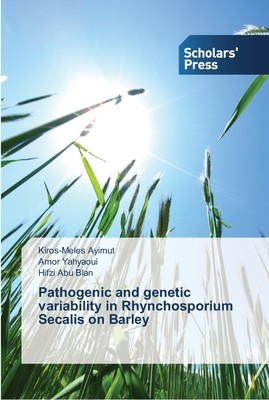
- We will send in 10–14 business days.
- Author: Kiros-Meles Ayimut
- Publisher: Scholars' Press
- ISBN-10: 3639513118
- ISBN-13: 9783639513110
- Format: 15.2 x 22.9 x 0.7 cm, softcover
- Language: English
- SAVE -10% with code: EXTRA
Pathogenic and genetic variability in Rhynchosporium Secalis on Barley (e-book) (used book) | bookbook.eu
Reviews
Description
Rhynchosporium secalis (Oud) Davis, is a fungal pathogen that causes scald disease of barley and is common in most barley growing areas of the world including the middle east and Ethiopia. The middle east is part of the fertile crescent where barley and other crops were first domesticated and is considered as the center of origin for barley. Ethiopia, with its varying climatic and edaphic conditions is considered as the center of diversity for barley. This work examined the level of pathogenic and genetic variability in populations of the pathogen collected from the center of origin (Syria and Jordan) and center of diversity (Ethiopia)of its host crop, barley.
EXTRA 10 % discount with code: EXTRA
The promotion ends in 20d.03:32:45
The discount code is valid when purchasing from 10 €. Discounts do not stack.
- Author: Kiros-Meles Ayimut
- Publisher: Scholars' Press
- ISBN-10: 3639513118
- ISBN-13: 9783639513110
- Format: 15.2 x 22.9 x 0.7 cm, softcover
- Language: English English
Rhynchosporium secalis (Oud) Davis, is a fungal pathogen that causes scald disease of barley and is common in most barley growing areas of the world including the middle east and Ethiopia. The middle east is part of the fertile crescent where barley and other crops were first domesticated and is considered as the center of origin for barley. Ethiopia, with its varying climatic and edaphic conditions is considered as the center of diversity for barley. This work examined the level of pathogenic and genetic variability in populations of the pathogen collected from the center of origin (Syria and Jordan) and center of diversity (Ethiopia)of its host crop, barley.


Reviews